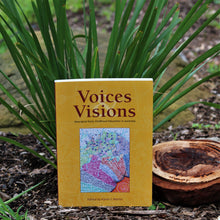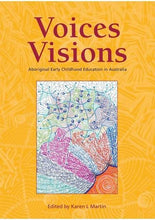Just as our visions will be the present of some young Aboriginal children who are not yet born, these will be made real through our voices and actions right now. The question begs to be asked: ‘What kind of people do we want those children of the future to remember us as being?’
This book reflects the stories of practitioners in Aboriginal early childhood education in Australia. It is not just their stories, but a text for how Aboriginal worldviews and frameworks are incorporated in what they do. As Aboriginal people we have always had to conform to a Western schooling system, one which does not fully appreciate our knowledges. In what you are about to read there is an implied but silent script in that, ‘you listen now and let us tell you’.
From the Foreword by Jackie Huggins, Inaugural Co-Chair: Aboriginal Congress
I really liked all of the stories and all the voices and how the narratives wove around key learnings, highlighting the important events from the author’s points of view, how these were experienced and other things that the writer wants the reader to know: the successes, the challenges; stories of family, of country and so much more. But they are also all essentially stories about early childhood education and what it means to be a good Aboriginal educator … I have never met any of the authors personally but feel I know them after reading the stories.
Professor Maggie Walter, Pro Vice-Chancellor Aboriginal Research and Leadership, University of Tasmania
Contents
Foreword — Dr Jackie Huggins
Part One Aboriginal Peoples and Early Childhood Education in Australia
Prologue — Karen Martin
Aboriginal worldviews
Aboriginal knowledge frameworks and processes: Acknowledgements
Chapter 1 Aboriginal Early Childhood Education in Australia: Contexts and conditions — Karen Martin
Aboriginal Australia: Contexts and conditions
Aboriginal early childhood: Contexts and conditions
Aboriginal education contexts: Schooling
Aboriginal early childhood education: Australian contexts and local conditions
Chapter 2 The Purposes of the book — Karen Martin
Purpose 1: Closing the knowledge gap in Aboriginal early childhood education
Purpose 2: Understanding the intersection of the personal and the professional lives of Aboriginal early childhood educators
Purpose 3: Aboriginal worldview, knowledge frameworks and the written text
Part Two Aboriginal Worldviews and Knowledges: Coming alongside the people and the stories
Chapter 3 The Welcoming: Coming alongside — Karen Martin
Welcoming the stories to this book
Welcome to this book and to the stories
Chapter 4 Introductions: Coming alongside the people — Karen Martin
Meet the writers
Some final words
Chapter 5 Explanations: The writers, the stories and the voices — Karen Martin
Why this book looks the way it does: learning about the style and genre
Voice and spaces: Decisions for righting and writing
Having voices and being writers
Yarns and yarning: Aboriginal knowledges and terms of reference
How to read this book
Some final words
Part Three Aboriginal Early Childhood Educators: Who are we – Where do we come from?
Chapter 6 Leadership — Sue Atkinson-Lopez, Carol Russell
Chapter 7 Beginnings — Denise Proud, Ngaire Jarro, Maria Pender, Michelle Hamilton
Chapter 8 Identity — Michelle Hamilton, Anne Yaloot, Ngaire Jarro
Part Four Aboriginal Early Childhood Educators: Where are we now – What does that mean?
Chapter 9 Connectedness — Fran Grant, Ngaire Jarro
Chapter 10 Places — Vicki Hynam, Anne Yaloot, Denise Proud
Chapter 11 Commitment — Denise Proud, Ngaire Jarro, Maria Pender, Michelle Hamilton, Fran Grant
Part Five Aboriginal Early Childhood Education: What comes next?
Chapter 12 Passion — Michelle Hamilton; Vicki Hynam and Anne Yaloot
Chapter 13 Persistence — Fran Grant; Michelle Hamilton; Ngaire Jarro; Denise Proud
Chapter 14 Resilience — Fran Grant, Ngaire Jarro
Chapter 15 Futures — Ngaire Jarro, Fran Grant, Anne Yaloot
Product Details
Author: Karen Martin
Size: 245x175mm
Format: Paperback




